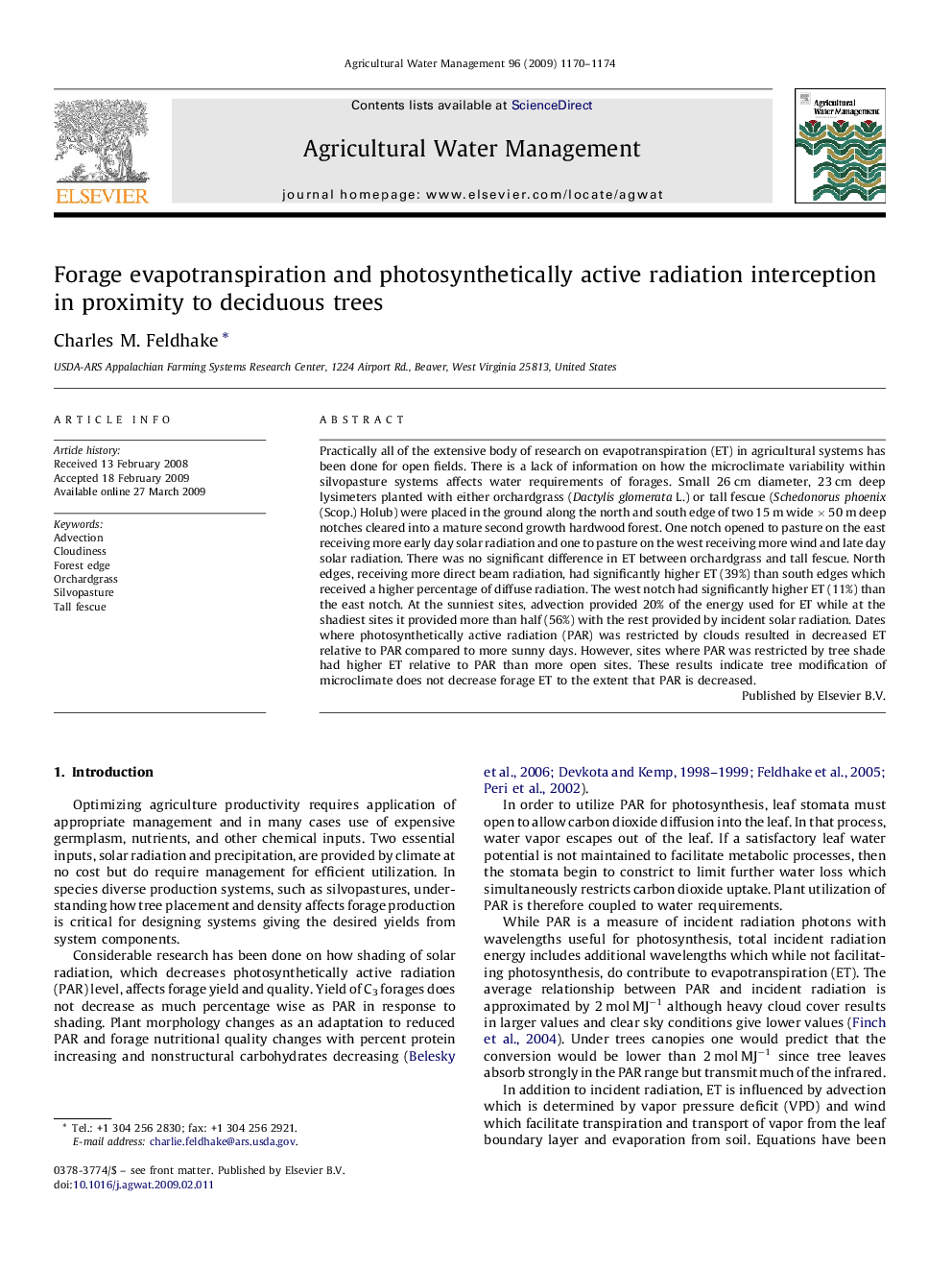| Article ID | Journal | Published Year | Pages | File Type |
|---|---|---|---|---|
| 4479956 | Agricultural Water Management | 2009 | 5 Pages |
Practically all of the extensive body of research on evapotranspiration (ET) in agricultural systems has been done for open fields. There is a lack of information on how the microclimate variability within silvopasture systems affects water requirements of forages. Small 26 cm diameter, 23 cm deep lysimeters planted with either orchardgrass (Dactylis glomerata L.) or tall fescue (Schedonorus phoenix (Scop.) Holub) were placed in the ground along the north and south edge of two 15 m wide × 50 m deep notches cleared into a mature second growth hardwood forest. One notch opened to pasture on the east receiving more early day solar radiation and one to pasture on the west receiving more wind and late day solar radiation. There was no significant difference in ET between orchardgrass and tall fescue. North edges, receiving more direct beam radiation, had significantly higher ET (39%) than south edges which received a higher percentage of diffuse radiation. The west notch had significantly higher ET (11%) than the east notch. At the sunniest sites, advection provided 20% of the energy used for ET while at the shadiest sites it provided more than half (56%) with the rest provided by incident solar radiation. Dates where photosynthetically active radiation (PAR) was restricted by clouds resulted in decreased ET relative to PAR compared to more sunny days. However, sites where PAR was restricted by tree shade had higher ET relative to PAR than more open sites. These results indicate tree modification of microclimate does not decrease forage ET to the extent that PAR is decreased.
